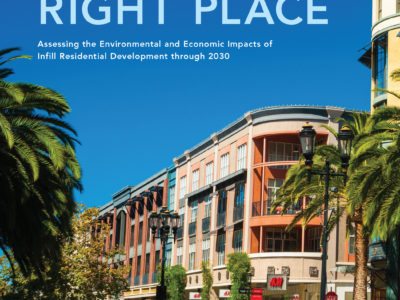Year: 2017
Channels of Change
Even Trump can’t kill progress. Here’s why.
Trump won’t be able to undo all of Obama’s legacy on climate change, but much of it will be stymied. State governments will continue to remain active, and will fight Trump in the courts, along with environmental groups. And in a series of recent posts, I’ve described other channels that will continue to operate: Municipalities. …
Continue reading “Channels of Change”
CONTINUE READINGWhat Do We Really Gain If the U.S. Stays in the Paris Agreement?
As Long As Trump Is President
(This post is cross-posted at https://takecareblog.com/blog/what-do-we-really-gain-if-the-u-s-stays-in-the-paris-agreement.) The Trump Administration will apparently decide soon whether to keep the United States as a party to the Paris Agreement. Although I understand why so many observers have argued that the U.S. should remain in Paris, I have already expressed my view that remaining in Paris is at best …
Continue reading “What Do We Really Gain If the U.S. Stays in the Paris Agreement?”
CONTINUE READINGLook Out Below!
U.S. Supreme Court Signals Interest in Key Environmental Law/Federal Preemption Case From California
The U.S. Supreme Court today signaled that it is seriously considering whether to review an important environmental law case from California–one in which the California Supreme Court previously ruled that California’s ban on environmentally-damaging suction dredging in state rivers is not preempted by federal law. The case is People v. Rinehart, U.S. Supreme Court No. 16-970. …
Continue reading “Look Out Below!”
CONTINUE READINGNew Article Provides In-Depth Analysis of Limits to Presidential Authority Under the Antiquities Act
Analysis By Faculty at UCLA, University of Colorado, and UC Berkeley Concludes that Congress Alone, and Not the President, May Eliminate or Shrink National Monuments
[Updated June 12, 2017 to reflect availability of final published article] Mark Squillace of University of Colorado, Eric Biber of UC Berkeley, my UCLA colleague Nick Bryner, and I have co-authored a short academic article (published in Virginia Law Review Online) about the President’s authority to abolish or shrink national monuments. This article provides detailed historical research and …
CONTINUE READINGGuest Bloggers Michael Wara and Danny Cullenward: Understanding SB 775: A Realistic Path to Achieving California’s Climate Goals
SB 775 Provides a Strong Carbon Pricing Policy and Addresses Legal and Political Constraints
Two recent Legal Planet contributors have shared concerns about SB 775 over the last several days (Ann Carlson’s piece is here and Dallas Burtraw’s is here). We write here to provide context—economic, legal, and political—to help readers, and perhaps even these respected authors, better understand why the bill proposes to extend and evolve California’s approach …
CONTINUE READINGWhat Are Law Schools Doing About Climate Change?
Quite a bit, as it turns out.
Law schools produce volumes of scholarship on climate change and energy issues. They also train the next generation of leaders in environmental law. Those are the traditional roles, but many law schools are also engaging more directly with those issues. I’ve put together a sample of some current programs, which illustrate the depth and diversity …
Continue reading “What Are Law Schools Doing About Climate Change?”
CONTINUE READINGGuest Bloggers Amy Vanderwarker and Kay Cuajunco: Equity at the Center: SB 775 and AB 378 Create New Path Towards More Equitable, Effective Climate Policy
By Prioritizing Equity, We Fight Climate Change, Improve Local Air Quality and Public Health, and Deliver Economic Benefits
California is at a crossroads in our strategy to fight climate change. With the current form of cap and trade due to end in 2020, our state is deciding to what extent carbon pricing will play a role in meeting the 2030 targets enacted in 2016, and if so, what the program will look like. …
CONTINUE READINGWhere To Build Housing In California Through 2030
Join Berkeley Law’s Free Webinar On Wednesday, May 17th, 11am to Noon
California isn’t building enough housing to meet jobs and population growth, and what housing is getting built is happening too much in sprawl areas on greenfields. While this greenfield-focused development may please pro-sprawl conservatives, it will worsen traffic and air pollution and keep the state from meeting its long-term environmental goals. To discuss where and …
Continue reading “Where To Build Housing In California Through 2030”
CONTINUE READINGPublic Lands Watch: Comment Period on National Monuments
You can share your thoughts on Interior’s review of National Monuments
As we have noted in earlier posts, President Trump issued an executive order calling for the Interior Department to review a range of National Monuments created over the past 16 years through Presidential proclamations. The Interior Department has recently announced a public comment period for that review. If you are interested in sharing your comments …
Continue reading “Public Lands Watch: Comment Period on National Monuments”
CONTINUE READINGFinally, some good news from Congress
The Senate voted 51-49 Wednesday morning against considering a resolution to repeal Obama-era regulations targeting methane emissions from oil and gas operations on federal lands. The Senate was considering whether to vote on rolling back the rule under the Congressional Review Act, which allows the Senate to repeal rules within 60 days of enactment. Three …
Continue reading “Finally, some good news from Congress”
CONTINUE READING








